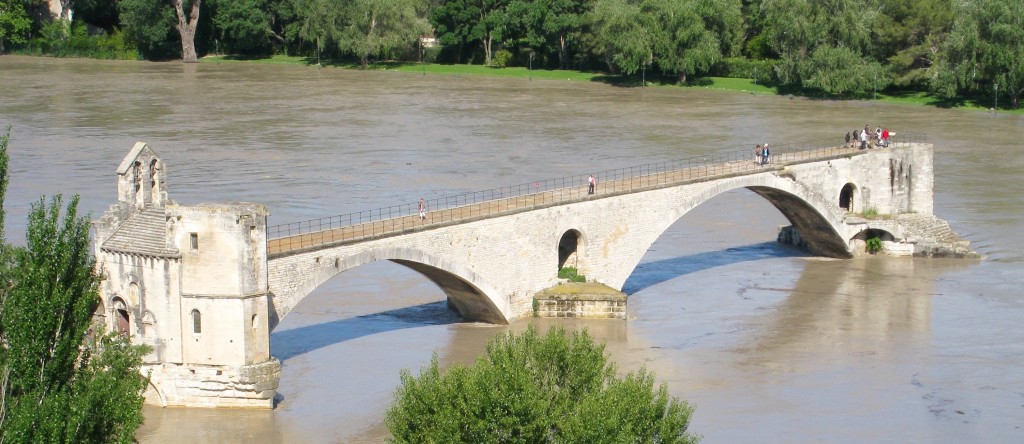
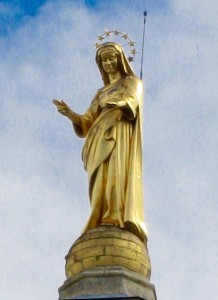 Cumulus clouds drifted across a blue sky as we left our hotel and walked toward the mighty complex of austere buildings sitting high on the Rocher des Doms. Our destination was the Avignon Cathedral, built in 1111. Then, the architecture was pure provençal Romanesque, but in the fourteenth century a cupola added to make the cathedral grander collapsed, so the church was rebuilt in 1425 in the Byzantine style. Baroque galleries were added in the seventeenth century and the steeple topped with a gilded Virgin Mary whose glow can be seen for miles.
Cumulus clouds drifted across a blue sky as we left our hotel and walked toward the mighty complex of austere buildings sitting high on the Rocher des Doms. Our destination was the Avignon Cathedral, built in 1111. Then, the architecture was pure provençal Romanesque, but in the fourteenth century a cupola added to make the cathedral grander collapsed, so the church was rebuilt in 1425 in the Byzantine style. Baroque galleries were added in the seventeenth century and the steeple topped with a gilded Virgin Mary whose glow can be seen for miles.
Although damaged during the French Revolution, and even used as a prison for a while, the interior is richly decorated and boasts a huge octagonal dome and two organs. And there remain a few Gothic tombs of some of Avignon’s popes. Over the years bells have been donated, and today the carillon is thirty-five strong. Despite being dwarfed by its extravagant neighbor, the Palais des Papes, the church is impressive and beautiful.
After viewing the cathedral, we queued up with a small group of tourists to tour the Palais des Papes and its gardens. The commanding, fortress-like sandstone buildings that tower over the surrounding rooftops have dominated the skyline of Avignon for 650 years and were home to seven successive French popes who preferred to administer from Avignon rather than Rome. Why? The short version: political turmoil. During the French Revolution, the structures were threatened with demolition but were instead used as army barracks and remained as such until a hundred years ago. In 1906 the army vacated the palace, and a major restoration began to restore it to its former sacred splendor.
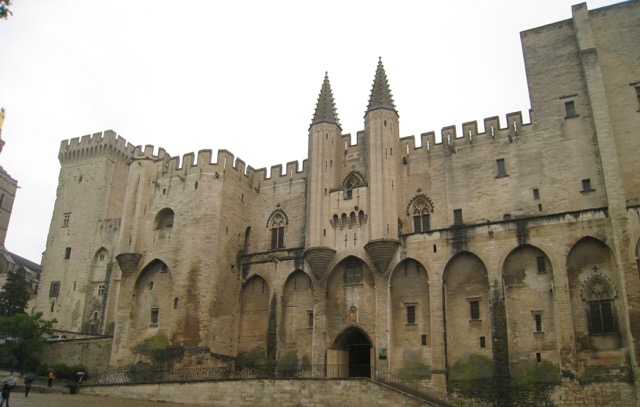
Palais des Papes is really two palaces, an old one built in 1335 by Pope Benedict XII and a new one built twenty years later by his successor, Pope Clement VI. Benedict, an ex-Cistercian monk, embraced simplicity, while Clement, who came from nobility, favored opulence and loved art. He commissioned Italian artist Matteo Giovannetti to paint magnificent frescoes to decorate the palace. In the great audience hall, portraits of prophets from the Old Testament adorn the vaulted ceiling on a sky-blue background. Bare, dimly lit halls and chapels are on the first and second levels and are linked by wide staircases. There are two chapels, one on top of the other, St. Martial and St. John, and the ceiling and walls are graced with restored depictions of the lives of the two saints. The Palais des Papes is the biggest Gothic palace in the world, at approximately 162,000 square feet of living space and more than twenty rooms.
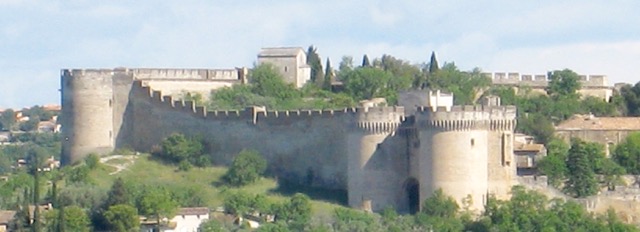
We spent about a half hour strolling the palace grounds, then walked across the Saint Bénézet bridge, which was started in 1177 and completed in 1185. According to lore, the bridge’s construction was inspired by Saint Bénézet, a shepherd boy who, while tending his flock, heard the voice of Jesus asking him to build a bridge across the Rhône. Ridiculed, he proved his divine inspiration by lifting a huge stone, thereby winning support for his project. His remains were interred in Saint Nicholas Chapel, a small chapel built on the bridge between the second and third arch. Originally, the bridge had twenty arches, but only four remain, the rest being swept away in the raging floodwaters of the Rhône. The chapel is named after the patron saint of the Rhône boatmen, Saint Nicholas.
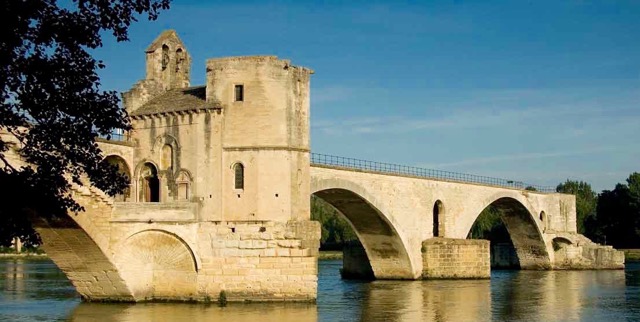 Intrigued by Saint Bénézet’s story, I headed straight for the chapel, which has been reconstructed and restored and is now divided into two floors, each with a nave and an apse. In 1670 the bridge was abandoned and the relics of Saint Bénézet were moved to the Hôpital Saint Bénézet within the city walls.
Intrigued by Saint Bénézet’s story, I headed straight for the chapel, which has been reconstructed and restored and is now divided into two floors, each with a nave and an apse. In 1670 the bridge was abandoned and the relics of Saint Bénézet were moved to the Hôpital Saint Bénézet within the city walls.
From the bridge we made our way to the Rue des Teinturiers, where we had lunch at an outdoor café—salades Niçoise. Rue des Teinturiers is a lovely cobbled street that runs along a canal and is shaded by sycamore trees. The French call them plane trees. The main attraction of the street is browsing the shops and galleries and drinking and dining. We wanted to see the water wheels. At the height of the weaving boom, the mills were powered by twenty-three water wheels along the canal; the water was also used to rinse the fabrics. Many wheels were destroyed during the French Revolution, and only four remain today.
We spent the afternoon window shopping, then retired to our room to relax. So far, the weather on the trip had been chilly and rainy, and we both felt as if we were coming down with colds. Of course, the good soaking we got walking back from the Monoprix the day before hadn’t helped. Our sneakers still hadn’t completely dried. We ate dinner that night at a bistro near the hotel—piping hot French onion soup, crusty French bread warm from the oven, and a local chardonnay.


0 Comments